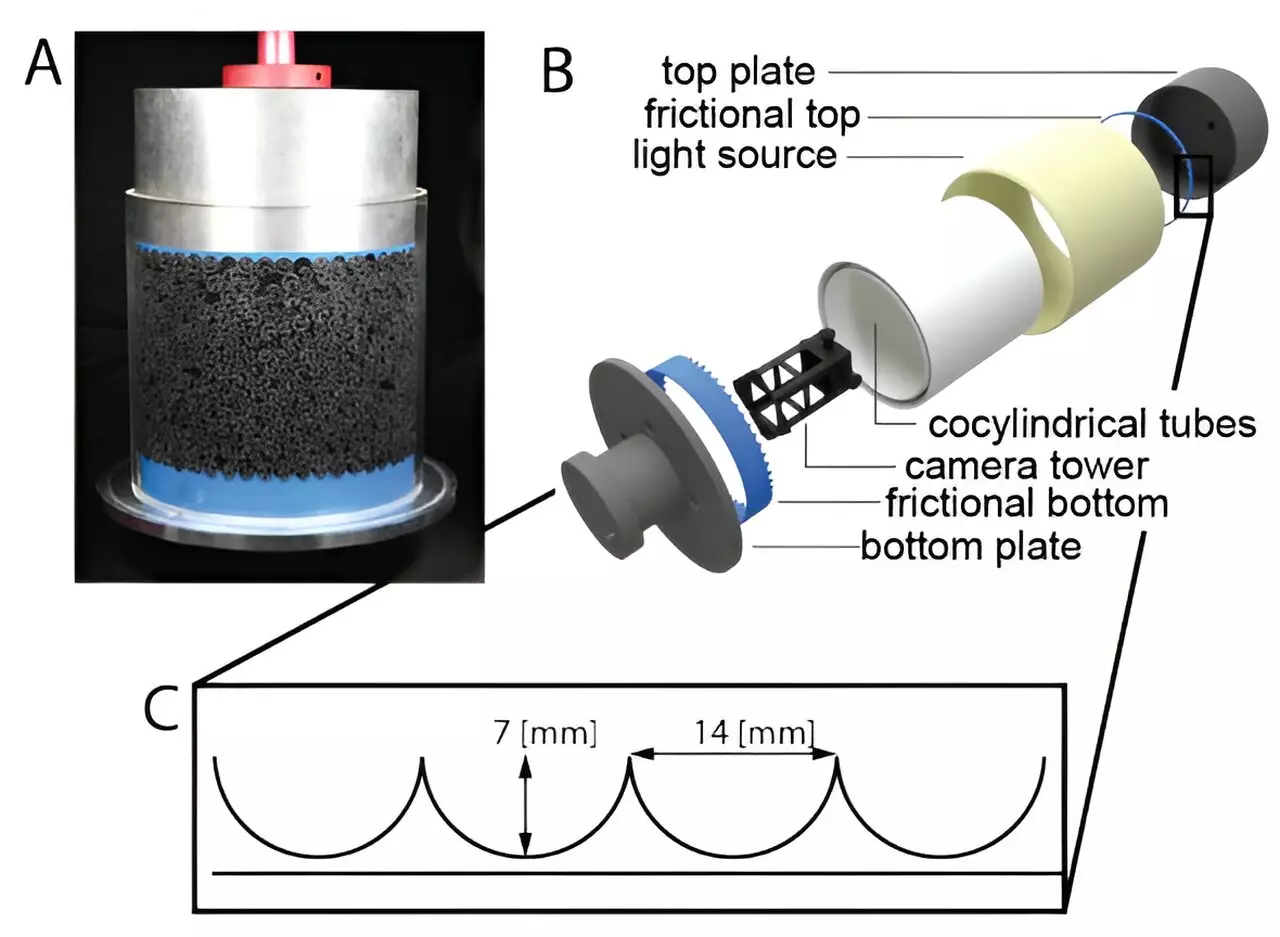Granular materials are a fascinating subject of study, with properties that can vary greatly depending on their arrangement and composition. When walking on the beach, sand seems solid and difficult to compress, but put those same sand grains in an hourglass and they flow like a liquid. Scientists have been able to fine-tune the flow properties of lab-made granular materials, but compressibility has remained a challenge. However, researchers from the University of Amsterdam and Santiago have made a breakthrough in designing new granular materials that can be easily compressed, opening up exciting possibilities in applications like shock dampening.
Along the coast of Japan, tetrapods are used as enormous four-legged concrete blocks to prevent erosion of coastal structures. These tetrapods form a granular metamaterial, designed by humans to serve a specific purpose. The shape of tetrapods, with extended legs, makes it difficult for them to flow. Unlike ordinary boulders, tetrapods stay in place and effectively prevent changes in the coastline. This example highlights the ease of creating a granular system that is almost incompressible and flows poorly. However, the challenge lies in creating a material that is easy to compress and flows better than sand.
The researchers from Amsterdam and Santiago have published their work in the Proceedings of the National Academy of Sciences, showcasing their innovative approach to designing granular materials. By constructing the geometry of the material to achieve the desired response, the researchers were able to make grains that shrink radially under external pressure. This unique property allows the grains to maintain their flowing behavior similar to that of a liquid even when compressed. This breakthrough opens up new opportunities to create packings that are easy to compress while still flowing easily.
One of the exciting applications of these new granular materials is shock dampening. The researchers demonstrated that a metal disk dropped into a packing of the new grains slows down gradually and transfers energy more consistently to the material, reducing bounce. This property could have significant implications for scenarios like speed skating races, where impact force could be minimized by using these innovative grains in protective cushions.
By breaking new ground in the field of granular materials, the researchers have paved the way for further advancements in applications ranging from construction to sports safety. The ability to finely tune the properties of granular materials opens up possibilities for innovations that were previously thought to be unattainable. The future looks promising for these revolutionary granular materials, with potential impacts that could revolutionize various industries.


Leave a Reply